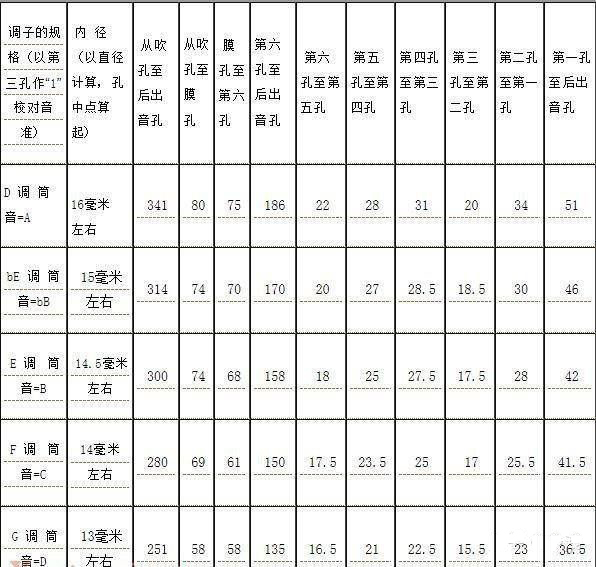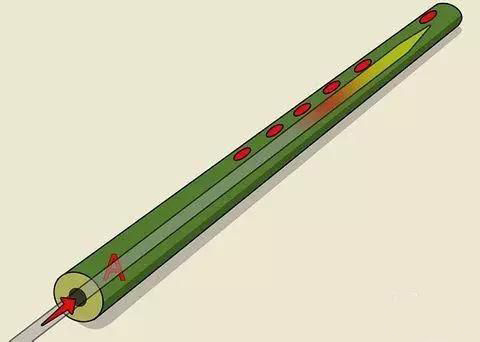How to make a flute
In the mountains and countryside far away from the city, there are many flute lovers who are troubled by not being able to buy an ideal flute. However, there may be a lot of bamboo growing in the local area, and it would be great if we could make our own flutes. To this end, I will introduce you to a simple method of making a flute.
1. Making tools:
(1) Small saws or knives capable of cutting bamboo;
(2) Drills that can drill holes (holes) or thick iron wires (burned red) are used for drilling;
(3) Small sharp knives for digging holes (ordinary small sharp knives can also be used);
(4) A long knife that can pierce through the bamboo, or use a thick steel wire to make one end into a semi-circle, and grind it sharply;
(5) Pencil and millet up to the ruler.
2. The thickness of bamboo and the ratio of sound hole, membrane hole and blow hole distance, please refer to the following chart:
Common flute size ratio table

Regular bamboo flute size
Note: 1. The distance between each hole must be calculated from the center of each hole, not from the edge of the hole.
2. Dimensions are in millimeters, such as 15mm.
3. Production process:
(1) First choose the material of bamboo. Generally speaking, it is necessary to choose old, solid and dry bamboo, followed by small bamboo joints (not too tight), round and flat surface, and the thickness of the two ends is not much different. Once selected, cut into sections according to the length of the flute. If the bamboo body is not straight, you can use firewood (or grass fire) to bake it. After heating the bent area, straighten it and immerse it in cold water (to prevent the curvature from recovering). After cooling, take it out and wipe it dry. Before making a flute, we must first define a concept, that is, "inner diameter".
(2) Open the inner section and flatten the outer section to be as smooth as possible inside and outside. If the bamboo skin is rough and unsightly, you can also scrape a thin layer of skin.

(3) Compare the size and decide the tone. After the bamboo material is ready, measure the inner meridian (diameter) and length, and decide what kind of flute is the most suitable according to its thickness and length.

(4) Tuning and digging. This is the most important and the most difficult step in the whole process of making the flute. Often the whole flute is scrapped because a hole is dug unqualified (pronunciation is not allowed).
When digging a hole, first dig the blowing hole (do not dig too large), plug the flute plug (you can also use a bamboo joint not to get through to make the flute plug), and then measure the distance from the blowing hole to the rear sound hole , dig two rear sound holes. Start by digging a little bit first, then blow it, listen to it, and see if the sound in the barrel is accurate? If it is lower, dig both holes forward (toward the blow hole) larger, or not. It is important to note that when digging holes, the specified size cannot be exceeded, in case the sound hole is too high to make up for it.
After digging the rear sound hole, use this hole as the base point, and dig holes in order in the direction of the blowing hole, according to the size ratio. The method of digging is to dig small points first, and then expand while auditioning. Dig one hole, then dig another hole, and finally dig the membrane hole. Both excess bamboo can be sawed off first or after. If the bamboo flute tail is long, you can also open two front sound holes (also known as tuning holes), or you can cut the flute tail shorter, not the front sound holes.
After all the procedures are completed, the general proofreading and inspection are carried out, and finally the paint is applied. In this way, a new flute is fully made.
 渝公网安备 50010702504639号
渝公网安备 50010702504639号